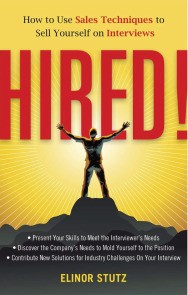Friday, April 6, 2018
Attract the Right Job or Clientele:
Everyone knows that addressing client needs encourages more sales. But do you dig in enough to understand what motivates each client to buy – and – remain loyal?
My Story
There are two initial steps for identifying client needs as we head toward a sale In meetings. It is best to ask each client where they see a need. Once you have an answer, follow up with many more questions including ‘why’ and ‘how do you see the solution?’ First-hand insight always outperforms working with assumptions.
Part two is the examination of our habits when we are the client. We each have our criteria for selecting a vendor. The more we understand our unique decision-making process, the better we will be at providing an excellent delivery for others.
As employees on a job, we are to view ourselves as a client for the company. Hiring companies sell candidates on the merits of the position. But sometimes the reality and truth are different than what we hear in interviews. Inconsistencies are apparent.
In all situations, we each need to review what we view as troublesome. Then the question, ‘why?’ is to be examined and documented in detail. Remaining with a company that is less than ethical, tarnishes one’s brand. It can become difficult to gain employment elsewhere.
In the early stage of my career, I walked away from numerous jobs that fell short on promises to myself and the clientele. Later on, I learned that priorities and values are to be spelled out by all parties so that there is no misunderstanding.
“Consistency in accepting and giving service transforms into a qualified and matched clientele. Take the time to acknowledge all components of service that you admire. Doing so will lead to the better matched long-term clientele.”
Your Story About Defining Client Needs
As experience becomes yours, review the similarities and differences of needs among those who choose your service and those who walk away. The recognition leads to a highly targeted conversation. Over time, you will begin to feel as if you are an industry expert.
In meetings, do you:
- Attempt to understand why you are a candidate
- Inquire about deeper problems created by the initial one
- Share perspectives with your prospect to find agreement on the best solution?
For more insights Download the collaborative e-book for free: “Sales Training for the 21st Century” via SalesPop!
My contribution is entitled, “One Size Does Not Fit All.”
Defining client needs is a two-way street. The egotistical salespeople who believe they have all the answers are the ones who lose out. Their biggest mistake is that the client’s point of view comes first. From there the conversation becomes a friendly negotiation. Encouragement of a give and take dialogue presents far many more opportunities and more robust sales.
To ensure you are on track, Read, “Are You Adding Value to Client Services?”
For example, an IT person once attended a client meeting with me. George did nothing but non-stop talking about the greatness of our product. Throughout the hour, he backed up his claim with 100 slides. I was embarrassed and relieved when the meeting ended. The moment George departed from our office, I called the client to apologize. I also asked for a ‘do-over’ opportunity. The person was relieved I felt the way I did. I was invited back in and earned the sale with a give-and-take conversation.
Everyone has a desire to be heard, including each of us. Putting sales on a higher plane will have you developing a returning and referring clientele.
Sales Tips for Defining Client Needs:
- After the small talk, ask why you were invited in for a meeting
- Listen carefully to what others share and omit
- Ask questions regarding the information told to you
- Clarify anything you do not understand
- Move to more inquiries for a broader understanding
- Get the client’s perspective on resolving the problems
- If you have another idea, ask, ‘Would you consider…?’
- With an answer of ‘no,’ ask ‘why,’ to recognize where you can best be of service
- As you receive responses of ‘yes,’ ask related questions to build out both the sale and the service
- Celebrate Success!
These tips lead to The Smooth Sale!



Book Packages Available ~ email: elinor@smoothsale.net
